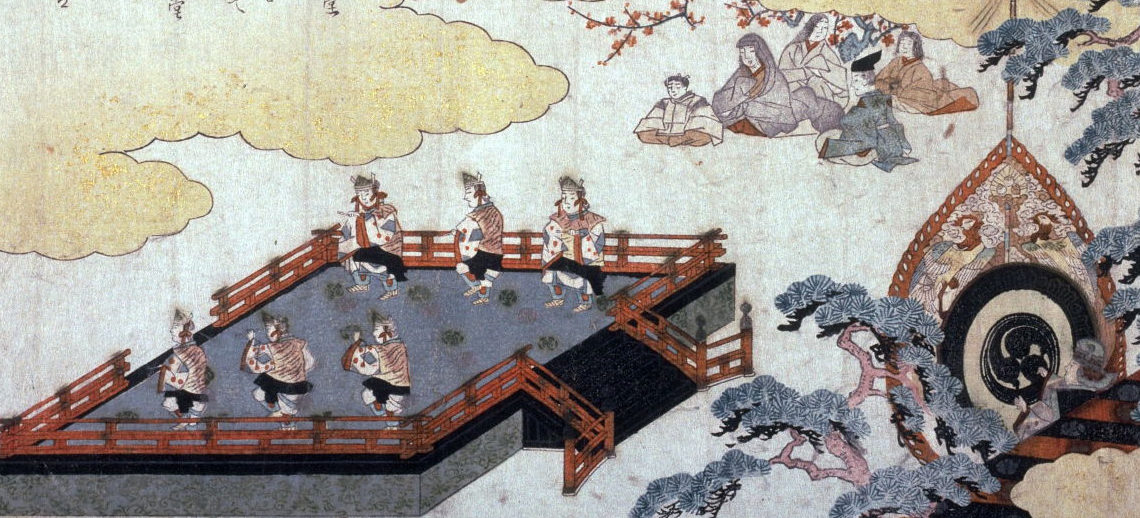Critical Interventions Lab I: The Gagaku Lab
Organizer: Fabio Rambelli (EALCS and Religious Studies), Summer 2020
Gagaku Lab Website
This lab examines the ritual and ceremonial aspects of performance. We will explore the relations of music with ritual and religion with special focus on Gagaku (the ceremonial music of the Japanese imperial court) and Bugaku (dance with music). The choice of this genre is motivated by its long history as Japan’s primary type of ceremonial music on the one hand, and its transnational nature on the other. Gagaku and Bugaku are associated since the Nara period with the imperial court, and that association continues until today, with the Music Department of the Imperial Household Agency. However, Gagaku and Bugaku have also been performed, since their introduction to Japan, for religious ceremonies at Buddhist temples and Shinto shrines. This tradition still continues today: Shitennōji temple in Osaka has preserved premodern forms of Bugaku performed together with Buddhist chanting (shōmyō), and is currently attempting to further revise and expand its tradition. In addition, many Shinto shrines have their own Gagaku/Bugaku ensembles, which they employ in the most important ceremonies of the liturgical year. Despite all this, the various and nuanced connections between Gagaku and religious rituals and ideas in Japan are not widely known. We plan to contribute to and further develop along interdisciplinary and transnational lines ongoing research taking place in Japan.
The second aspect of the Gagaku tradition that is especially relevant for our project is its transnational nature. Gagaku originated in the music and dances for ceremonies and banquets at the Chinese imperial court around the Tang Dynasty (yayue), when it was brought to Japan along with another genre known as gigaku—music and dances of a Buddhist nature from India, Central Asia, and Southeast Asia.
In the framework of our project, we plan to study Gagaku/Bugaku as a complex set of transcultural texts, with their flows and transformations throughout East Asia and beyond. Gagaku has been a source of inspiration for new compositions by contemporary composers, not only in Japan but also internationally (composers such as Takemitsu Tōru and Ichiyanagi Toshi in Japan, and Karlheinz Stockhausen and John Cage have composed for Gagaku instruments), not to mention its inclusion in “pop” products such as popular music, film, and anime—thus expanding its original transnational and transhistorical range. Approached in this way, Gagaku is a multidisciplinary entity that requires the collaboration of musicians and musicologists, but also of specialists from religious studies, theater and dance, art history, literature, and cultural history. At UCSB, Professor Fabio Rambelli has been studying with Maestro Bunno Hideaki, former director of the Gagaku ensemble at the Imperial Household Agency and living national treasure of Japan and other leading professionals.
